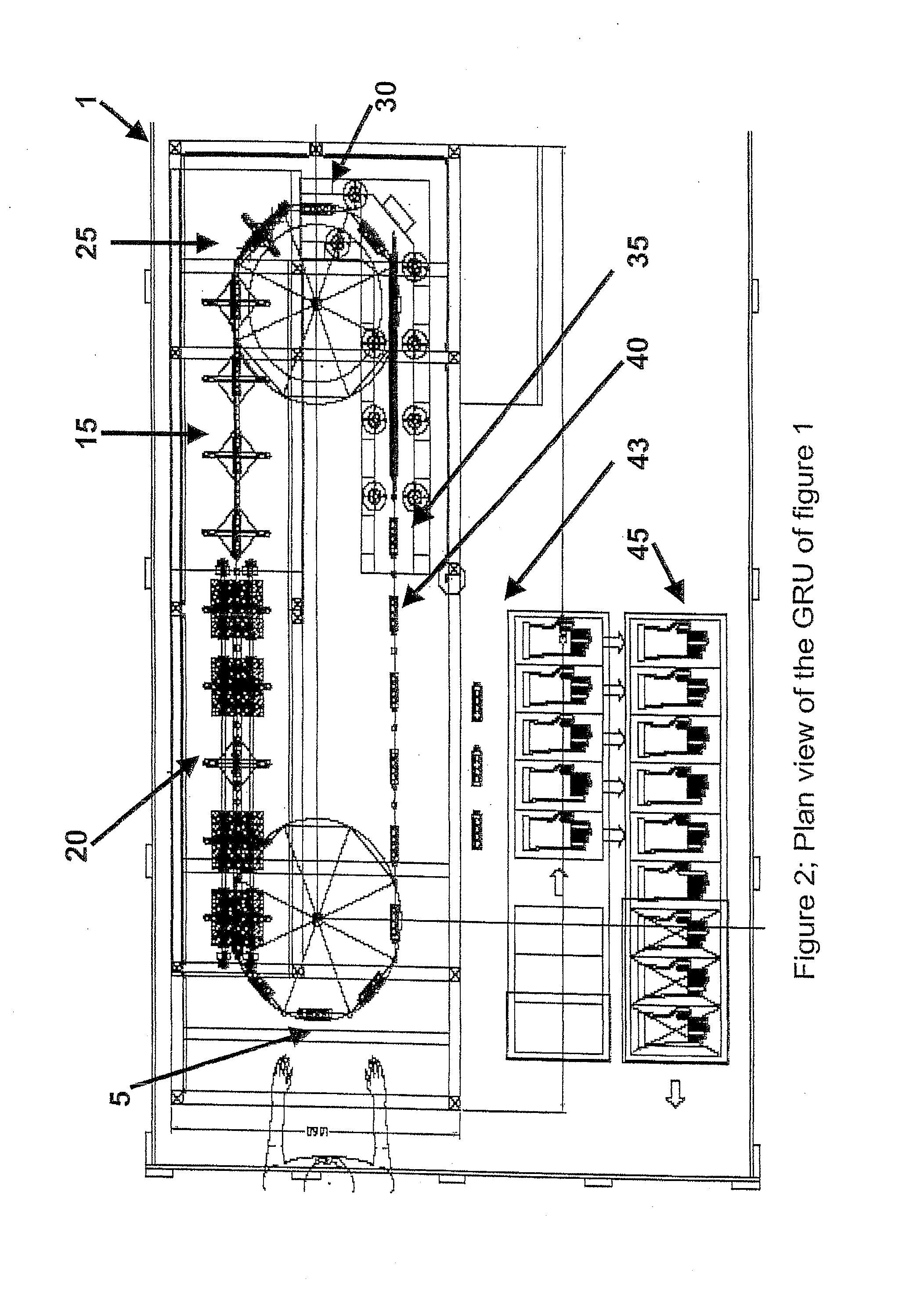System for the processing of reusable gloves
a technology for reusable gloves and processing systems, applied in the direction of resistance/reactance/impedence, instruments, liquid cleaning, etc., to achieve the effect of reducing waste disposal volume and reducing the cost of use of high-end quality gloves
- Summary
- Abstract
- Description
- Claims
- Application Information
AI Technical Summary
Benefits of technology
Problems solved by technology
Method used
Image
Examples
Embodiment Construction
[0056]As shown in FIGS. 1 and 2, the invention according to one embodiment comprises a series of linked processing stages 3 encapsulated in a single enclosure 1 that together automatically perform all the procedures necessary to resolve the individual and cumulative problems previously described in glove reprocessing. The automatic and computer-controlled machine, integrating a horizontal conveyor belt, formed by links which are themselves also glove-holders, moving forward horizontally (in the best case), and along which the successive steps of manual glove placing, automatic glove returning, washing, rinsing, drying, sterilizing, testing, packaging are performed.
[0057]The conveyer belt 15 permits the glove to be processed through different ‘work stations’ in a pre-determined processing cycle. First, the operator hangs a glove on an empty link 5. He stretches the cuff on the pinchers or projections (not shown) such that the glove is then hanging. The chain 15 moves forward one link...
PUM
 Login to View More
Login to View More Abstract
Description
Claims
Application Information
 Login to View More
Login to View More - R&D
- Intellectual Property
- Life Sciences
- Materials
- Tech Scout
- Unparalleled Data Quality
- Higher Quality Content
- 60% Fewer Hallucinations
Browse by: Latest US Patents, China's latest patents, Technical Efficacy Thesaurus, Application Domain, Technology Topic, Popular Technical Reports.
© 2025 PatSnap. All rights reserved.Legal|Privacy policy|Modern Slavery Act Transparency Statement|Sitemap|About US| Contact US: help@patsnap.com



